Archives
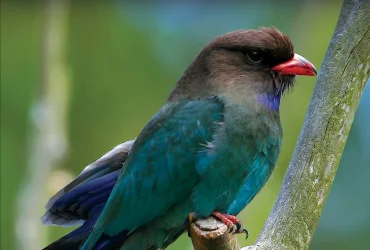 v4i1.68
v4i1.68ISSN: 1800-427X (print)
eISSN: 1800-427X (online)
DOI:10.47605/tapro.v4i1.68
Submitted date: 9 May 2012
Accepted date: 15 May 2012
Published date: 28 May 2012
Pp. 57–58.
The advertisement call of Kandyan shrub frog (Pseudophilautus rus)
Dinal J. S. Samarasinghe*
*E-mail: dinal.salvator@gmail.com
The Kandyan Shrub Frog, Pseudophilautus rus is known only from two localities around Kandy (500–800 m a.s.l), Sri Lanka; Kiribathkumbura and Pilimatalawa. Mature males attain a SVL of 20.6–24.1 mm and mature females up to 23.1 mm. P. rus perches on low vegetation, usually on leaves and branches of shrubs, grass, and logs, 0.1–1.5 m above the ground. Males of the species produce one of the most frequently heard calls in suburban and urban areas in Kandy, together with the common shrub frog P. popularis. Here, I describe for the first time the advertisement call of P. rus.
Section Editor: Jodi Rowley
eISSN: 1800-427X (online)
DOI:10.47605/tapro.v4i1.68
Submitted date: 9 May 2012
Accepted date: 15 May 2012
Published date: 28 May 2012
Pp. 57–58.
The advertisement call of Kandyan shrub frog (Pseudophilautus rus)
Dinal J. S. Samarasinghe*
*E-mail: dinal.salvator@gmail.com
The Kandyan Shrub Frog, Pseudophilautus rus is known only from two localities around Kandy (500–800 m a.s.l), Sri Lanka; Kiribathkumbura and Pilimatalawa. Mature males attain a SVL of 20.6–24.1 mm and mature females up to 23.1 mm. P. rus perches on low vegetation, usually on leaves and branches of shrubs, grass, and logs, 0.1–1.5 m above the ground. Males of the species produce one of the most frequently heard calls in suburban and urban areas in Kandy, together with the common shrub frog P. popularis. Here, I describe for the first time the advertisement call of P. rus.
Section Editor: Jodi Rowley
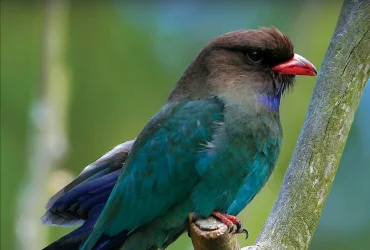 v4i1.67
v4i1.67ISSN: 1800-427X (print)
eISSN: 1800-427X (online)
DOI:10.47605/tapro.v4i1.67
Submitted date: 16 December 2011
Accepted date: 30 April 2012
Published date: 28 May 2012
Pp. 54–56.
Three tick species parasitizing a rock python in Sri Lanka
T.S.P. Fernando* & H.K.A.V.A. Kulasena Fernando
*E-mail: saminda@ou.ac.lk
Parasitism is a relationship where one of the parties (the parasite) either harms its host or lives at the expense of it. Host parasite interactions are important driving forces in population dynamics and even extinction. These interactions are also indicators of ecosystem health and they are important in stabilizing food webs. A parasite may cause mechanical injury, stimulate a damaging inflammatory or immune response, or simply rob the host of nutrition. However in the wild most parasites must live in harmony with their hosts. If the parasites kill the host, they themselves would ultimately die without shelter and nutrition. Reptiles become hosts to a number of parasitic organisms ranging from protozoans to arthropods. Among these, ticks (hard and soft) are the most common arthropod group that parasitizes reptiles.
Section Editor: Colin A. Chapman
eISSN: 1800-427X (online)
DOI:10.47605/tapro.v4i1.67
Submitted date: 16 December 2011
Accepted date: 30 April 2012
Published date: 28 May 2012
Pp. 54–56.
Three tick species parasitizing a rock python in Sri Lanka
T.S.P. Fernando* & H.K.A.V.A. Kulasena Fernando
*E-mail: saminda@ou.ac.lk
Parasitism is a relationship where one of the parties (the parasite) either harms its host or lives at the expense of it. Host parasite interactions are important driving forces in population dynamics and even extinction. These interactions are also indicators of ecosystem health and they are important in stabilizing food webs. A parasite may cause mechanical injury, stimulate a damaging inflammatory or immune response, or simply rob the host of nutrition. However in the wild most parasites must live in harmony with their hosts. If the parasites kill the host, they themselves would ultimately die without shelter and nutrition. Reptiles become hosts to a number of parasitic organisms ranging from protozoans to arthropods. Among these, ticks (hard and soft) are the most common arthropod group that parasitizes reptiles.
Section Editor: Colin A. Chapman
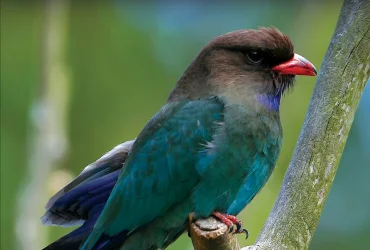 v4i1.66
v4i1.66ISSN: 1800-427X (print)
eISSN: 1800-427X (online)
DOI:10.47605/tapro.v4i1.66
Submitted date: 7 March 2012
Accepted date: 16 March 2012
Published date: 28 May 2012
Pp. 52–53.
First record of the blue sea slug (Glaucus atlanticus) from Andhra Pradesh – India
Bhargavi Srinivasulu*, C. Srinivasulu & G. Chethan Kumar
*E-mail: bharisrini@osmaniawildlife.org
The blue sea slug Glaucus atlanticus Forster, 1777 (Gastropoda, Glaucidae) is a nudibranch that occurs in temperate and tropical oceans throughout the world. It is characterized by a silvery white dorsal surface and dark blue ventral surface. The body is elongate measuring up to 3 cm and is flattened. The head is small and blunt with a pair of small oral tentacles near the mouth. The cerata or papillae are wing-like and extend laterally from three distinct pairs of peduncles. The papillae are placed in a single row (uniseriate) and may be 84 in total. A similar looking glaucid nudibranch, Glaucus marginata (Bergh, 1860), is a bluish-brown nudibranch with bluish underside, and differs from Glaucus atlanticus in bearing four pairs of clusters of papillae that are arranged in more than one row (multiseriate) and may be 139 or more in number. The latter species has been included by some authorities under the genus Glaucilla Bergh, 1860. Presently, both species are listed under Glaucus Poli, 1795.
Section Editor: Brenden Holland
eISSN: 1800-427X (online)
DOI:10.47605/tapro.v4i1.66
Submitted date: 7 March 2012
Accepted date: 16 March 2012
Published date: 28 May 2012
Pp. 52–53.
First record of the blue sea slug (Glaucus atlanticus) from Andhra Pradesh – India
Bhargavi Srinivasulu*, C. Srinivasulu & G. Chethan Kumar
*E-mail: bharisrini@osmaniawildlife.org
The blue sea slug Glaucus atlanticus Forster, 1777 (Gastropoda, Glaucidae) is a nudibranch that occurs in temperate and tropical oceans throughout the world. It is characterized by a silvery white dorsal surface and dark blue ventral surface. The body is elongate measuring up to 3 cm and is flattened. The head is small and blunt with a pair of small oral tentacles near the mouth. The cerata or papillae are wing-like and extend laterally from three distinct pairs of peduncles. The papillae are placed in a single row (uniseriate) and may be 84 in total. A similar looking glaucid nudibranch, Glaucus marginata (Bergh, 1860), is a bluish-brown nudibranch with bluish underside, and differs from Glaucus atlanticus in bearing four pairs of clusters of papillae that are arranged in more than one row (multiseriate) and may be 139 or more in number. The latter species has been included by some authorities under the genus Glaucilla Bergh, 1860. Presently, both species are listed under Glaucus Poli, 1795.
Section Editor: Brenden Holland
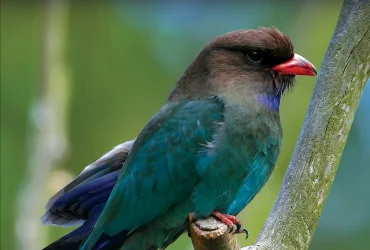 v4i1.65
v4i1.65ISSN: 1800-427X (print)
eISSN: 1800-427X (online)
DOI:10.47605/tapro.v4i1.65
Submitted date: 11 April 2012
Accepted date: 13 April 2012
Published date: 28 May 2012
Pp. 48–51.
Xenopeltis unicolor Boie, 1827 predation upon Sphenomorphus sp.
Bruno H. Martins & Gonçalo M. Rosa*
*E-mail: goncalo.m.rosa@gmail.com
Xenopeltis is a genus of non-venomous snakes characterized by its iridescent, highly polished scales which give to the species the common name “sunbeam snake”. Currently, two species are recognized. Xenopeltis unicolor Boie, 1827 is found in Southeast Asia and some regions of Indonesia occupying a variety of habitats from primary to secondary forests, agricultural and settled areas from elevations up to 1402 m. Being nocturnal and subfossorial, this species inhabits burrows excavated by small mammals and crevices within limestones, spending large amounts of time underground on the leaf litter. Pre-maxillary teeth are found in the aglyphous dentition of X. unicolor enabling a varied diet that consists primarily of frogs, lizards (particularly skinks), small mammals (such as rodents), birds and even other snakes.
Section Editor: Gernot Vogel
eISSN: 1800-427X (online)
DOI:10.47605/tapro.v4i1.65
Submitted date: 11 April 2012
Accepted date: 13 April 2012
Published date: 28 May 2012
Pp. 48–51.
Xenopeltis unicolor Boie, 1827 predation upon Sphenomorphus sp.
Bruno H. Martins & Gonçalo M. Rosa*
*E-mail: goncalo.m.rosa@gmail.com
Xenopeltis is a genus of non-venomous snakes characterized by its iridescent, highly polished scales which give to the species the common name “sunbeam snake”. Currently, two species are recognized. Xenopeltis unicolor Boie, 1827 is found in Southeast Asia and some regions of Indonesia occupying a variety of habitats from primary to secondary forests, agricultural and settled areas from elevations up to 1402 m. Being nocturnal and subfossorial, this species inhabits burrows excavated by small mammals and crevices within limestones, spending large amounts of time underground on the leaf litter. Pre-maxillary teeth are found in the aglyphous dentition of X. unicolor enabling a varied diet that consists primarily of frogs, lizards (particularly skinks), small mammals (such as rodents), birds and even other snakes.
Section Editor: Gernot Vogel
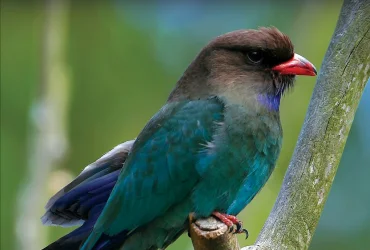 v4i1.64
v4i1.64ISSN: 1800-427X (print)
eISSN: 1800-427X (online)
DOI:10.47605/tapro.v4i1.64
Submitted date: 4 March 2012
Accepted date: 9 April 2012
Published date: 28 May 2012
Pp. 42–47.
EXPANDED DESCRIPTION OF Enhydris dussumierii (DUMÉRIL, BIBRON & DUMÉRIL, 1854) (REPTILIA: COLUBRIDAE: HOMALOPSINAE)
S.R. Chandramouli*, Baiju, J.J. Sebastien & S.R. Ganesh
*Corresponding author. E-mail: snakeranglerr@gmail.com
Abstract
Description of a poorly-known endemic Indian homalopsid water snake Enhydris dussumierii is expanded based on character state data obtained anew from newly examined live and preserved specimens in captive facilities. Knowledge on the natural history of this uncommon, endemic species is supplemented by our observations. Further field surveys in southwestern Indian coastal plains are recommended for fully documenting the geographic range of this species.
[b]Key words :Morphology, scalation, body form, colouration, distribution, India
Section Editor: Gernot Vogel
eISSN: 1800-427X (online)
DOI:10.47605/tapro.v4i1.64
Submitted date: 4 March 2012
Accepted date: 9 April 2012
Published date: 28 May 2012
Pp. 42–47.
EXPANDED DESCRIPTION OF Enhydris dussumierii (DUMÉRIL, BIBRON & DUMÉRIL, 1854) (REPTILIA: COLUBRIDAE: HOMALOPSINAE)
S.R. Chandramouli*, Baiju, J.J. Sebastien & S.R. Ganesh
*Corresponding author. E-mail: snakeranglerr@gmail.com
Abstract
Description of a poorly-known endemic Indian homalopsid water snake Enhydris dussumierii is expanded based on character state data obtained anew from newly examined live and preserved specimens in captive facilities. Knowledge on the natural history of this uncommon, endemic species is supplemented by our observations. Further field surveys in southwestern Indian coastal plains are recommended for fully documenting the geographic range of this species.
[b]Key words :Morphology, scalation, body form, colouration, distribution, India
Section Editor: Gernot Vogel
Hubungi Kami
The ultimate aim of the journal is to provide an effective medium for communication of the latest and best scientific information.
Copyright © 2020 Taprobanica. All Rights Reserved
Jasa Pembuatan Website by IKT




